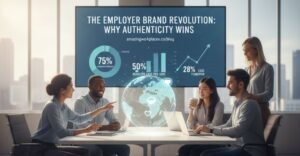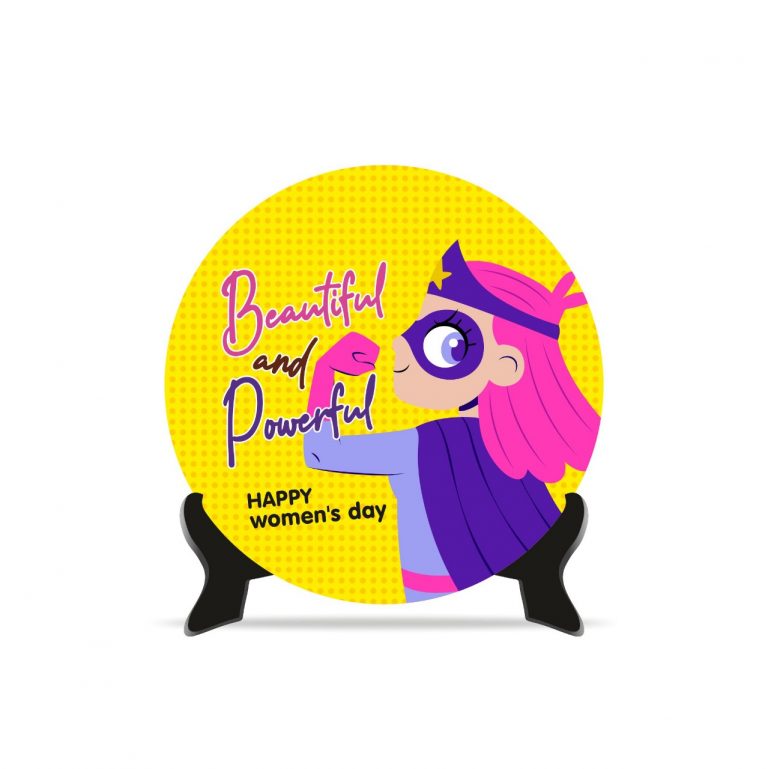In the dynamic world of talent acquisition, an organization’s reputation as an employer-its employer branding-is no longer a secondary HR function. It has become a critical business strategy. By 2025, the market is defined by a workforce that prioritizes values, authentic experience, and a strong culture over traditional incentives alone.
Organizations that succeed in the coming years will treat their brand as a living representation of the employee journey.
This forward-looking perspective, based on current HR research and talent analytics, reveals the main directions employer branding is headed.
The Reality of Employee Experience is the Brand
The modern candidate does not trust marketing campaigns. They trust the collective voice of the current workforce.
Data shows that the internal reality must match the external promise. When your culture is strong, employees become credible advocates. When the experience is poor, candidates quickly find out.
Transparency Drives Trust: Over 80% of job seekers research company reviews and ratings before submitting an application. A transparent online presence, including how a company responds to both positive and negative feedback, is essential.
The Cost of a Weak Brand: Companies with a weaker employer brand can see their cost-per-hire nearly double. Negative online sentiment directly increases recruitment expenses.
Focus on the Inside First: The most effective strategy is to embed the Employee Value Proposition (EVP) into the daily experience. This turns employees into genuine brand ambassadors.
Leadership in Workplaces: The New Face of the Brand
In 2025, corporate leaders are shifting from being abstract figures to public brand champions. Talent now “browses like they do on Netflix,” looking at who posted the job and what values that Leadership in workplaces upholds.
The leader’s voice on platforms like LinkedIn humanizes the organization. This trend moves away from polished corporate statements toward genuine executive-led communication.
Executive Storytelling: Senior leaders must actively share the company’s mission and values. This participation builds trust and commitment both internally and externally.
Beyond HR’s Responsibility: Employer branding is now a core business function. It requires active involvement from the C-suite, not just delegation to the Human Resources department.
Authentic Commitment: Engaged leaders create commitment. Research suggests companies with engaged leaders see a measurable increase in productivity and employee satisfaction.
Data-Driven Authenticity: The Role of Workplace Surveys and Certification
Employer branding success is increasingly measured and quantified. Gut feeling and general campaigns are being replaced by data insights.
HR teams are using advanced analytics to connect brand efforts directly to business outcomes like retention and application quality. Workplace surveys and external third-party certification bodies play a central role in validating the brand.
Linking Brand to ROI: Organizations are now linking branding metrics to recruitment ROI and retention rates. A stronger brand can lead to a significant reduction in turnover.
Related Posts
Validation Through Certification: Third-party certification programs offer external, verifiable proof of a great workplace culture. This evidence is more credible to candidates than the company’s own claims.
The Power of Surveys: Regular internal Workplace surveys provide real-time data on the employee experience. This feedback loop allows organizations to quickly adjust their policies to ensure the brand promise is being kept.
The Value Proposition Shifts: Well-being and Flexibility
The core components of the Employer Value Proposition (EVP) have changed significantly. Compensation is still important, but work-life balance, flexibility, and comprehensive well-being support are now top motivators globally.
Well-being as a Brand Cornerstone: Employee well-being is no longer a perk; it is a foundational brand differentiator. This includes integrated mental health support and stress management programs.
Flexibility is Standard: Flexible work arrangements, including hybrid models, are expected. Companies that effectively communicate their commitment to work-life balance gain a distinct competitive edge in the talent market.
Prioritizing Skills and Growth: Candidates seek employers who invest in their long-term professional development. Employer branding must emphasize skills development opportunities and clear career paths over static job titles.
Technology for Personalized Engagement
Technology, specifically Artificial Intelligence (AI), is being used to enhance, not replace, human connection in the hiring process. This moves beyond simple automation to creating personalized, high-touch candidate journeys at scale.
Personalized Candidate Journeys: AI tools help personalize job recommendations and content. This ensures that the organization’s brand message resonates uniquely with different talent segments.
The Human Touch Remains Critical: While AI automates routine tasks, candidates still prefer human interaction during critical stages of recruitment. The best strategies balance efficiency with genuine, person-to-person engagement.
Evolving Digital Presence: Career sites are transforming into engaging, interactive platforms. They are moving away from simple job boards to showcase dynamic employee stories and virtual tours that truly reflect the culture.
Conclusion
Employer branding in 2025 is an act of relentless authenticity. It demands that organizations move past superficial messaging and fully commit to the employee experience.
The future winners in the war for talent will be those who empower Leadership in workplaces to be visible, embrace the verifiable proof of workplace surveys and certification, and weave their unique culture into every touchpoint.
This commitment to transparency and reality is the only way to attract and retain the best talent in a market that prioritizes value and genuine connection.









